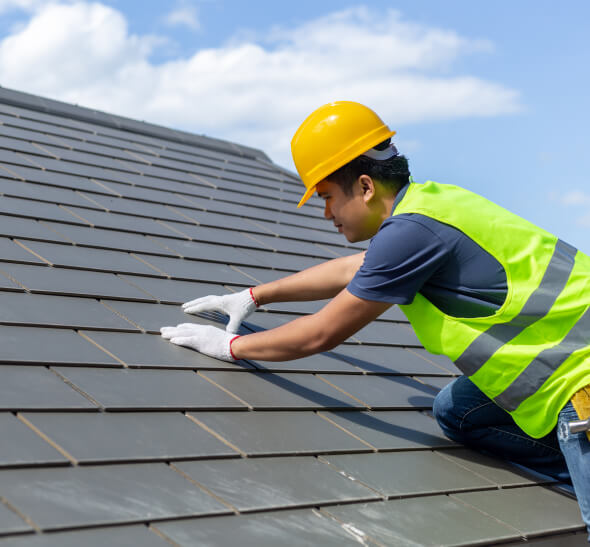Roof overlaying is a cost-effective alternative to complete roof replacement that can significantly extend the life of your existing roof. Whether your roof is starting to show signs of wear or you’re looking to enhance its durability, overlaying offers a practical solution. In this blog, we’ll explain what roof overlaying is, how it works, and why it might be the best option for your roofing needs. Learn how you can save money and protect your property with this innovative roofing technique.
1. Understanding Roof Overlaying
Roof overlaying involves applying a new layer of roofing material over your existing roof. Unlike a full roof replacement, which requires tearing off the old roof, overlaying allows you to add an extra protective layer without the need for extensive demolition. This method is ideal for roofs that are still structurally sound but have minor issues such as worn-out shingles or slight leaks.
2. When to Consider Overlaying
Roof overlaying is a great option when your roof has minor damage or wear but is still in good structural condition. If your roof is nearing the end of its lifespan but hasn’t suffered significant damage, overlaying can extend its life by several years. It’s also a suitable choice for homeowners and businesses looking for a quick, cost-effective way to improve their roof’s appearance and functionality.
3. Benefits of Overlaying
The primary benefit of roof overlaying is cost savings. Since there’s no need to remove the existing roof, labor costs are reduced, and the project can be completed faster. Overlaying also minimizes disruption to your daily activities, as the process is less invasive than a full replacement. Additionally, the added layer provides enhanced protection against the elements, reducing the likelihood of leaks and further damage.
4. The Overlaying Process
The roof overlaying process begins with a thorough inspection of your current roof to ensure it’s a suitable candidate for overlaying. Once approved, a new layer of shingles or other roofing material is installed directly over the existing roof. This layer is carefully aligned and secured to create a seamless and durable surface. The process is typically faster than a complete replacement, allowing you to enjoy your new roof sooner.
5. Long-Term Savings
While roof overlaying offers immediate cost savings, it also provides long-term financial benefits. By extending the life of your existing roof, you delay the need for a full replacement, which can be a significant expense. Additionally, the extra layer adds insulation, potentially lowering your energy bills. Overlaying is a smart investment that can save you money both now and in the future.
Conclusion:
Roof overlaying is an effective and economical way to extend the life of your roof and protect your property. By adding a new layer of roofing material over your existing roof, you can improve its durability, enhance its appearance, and save money on installation and long-term maintenance. If your roof is in need of an upgrade but doesn’t require a full replacement, consider the benefits of roof overlaying.
